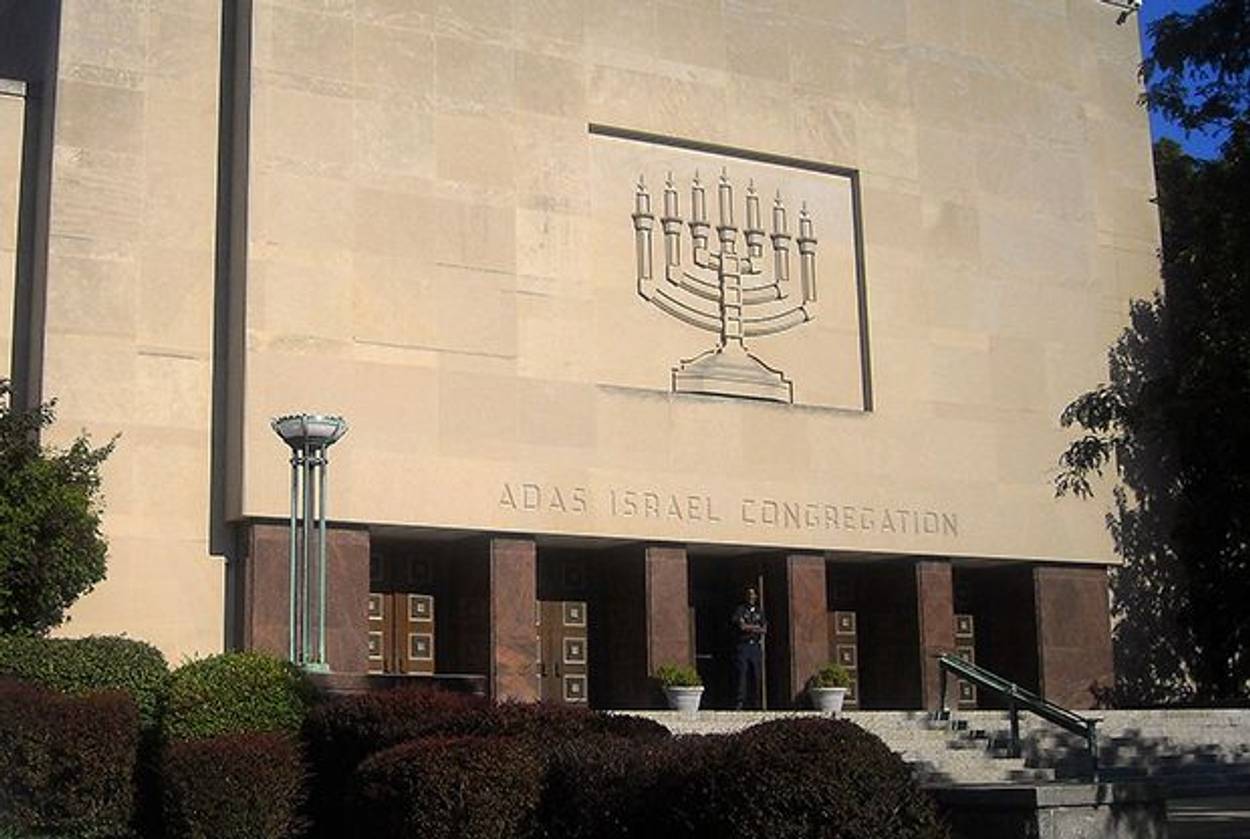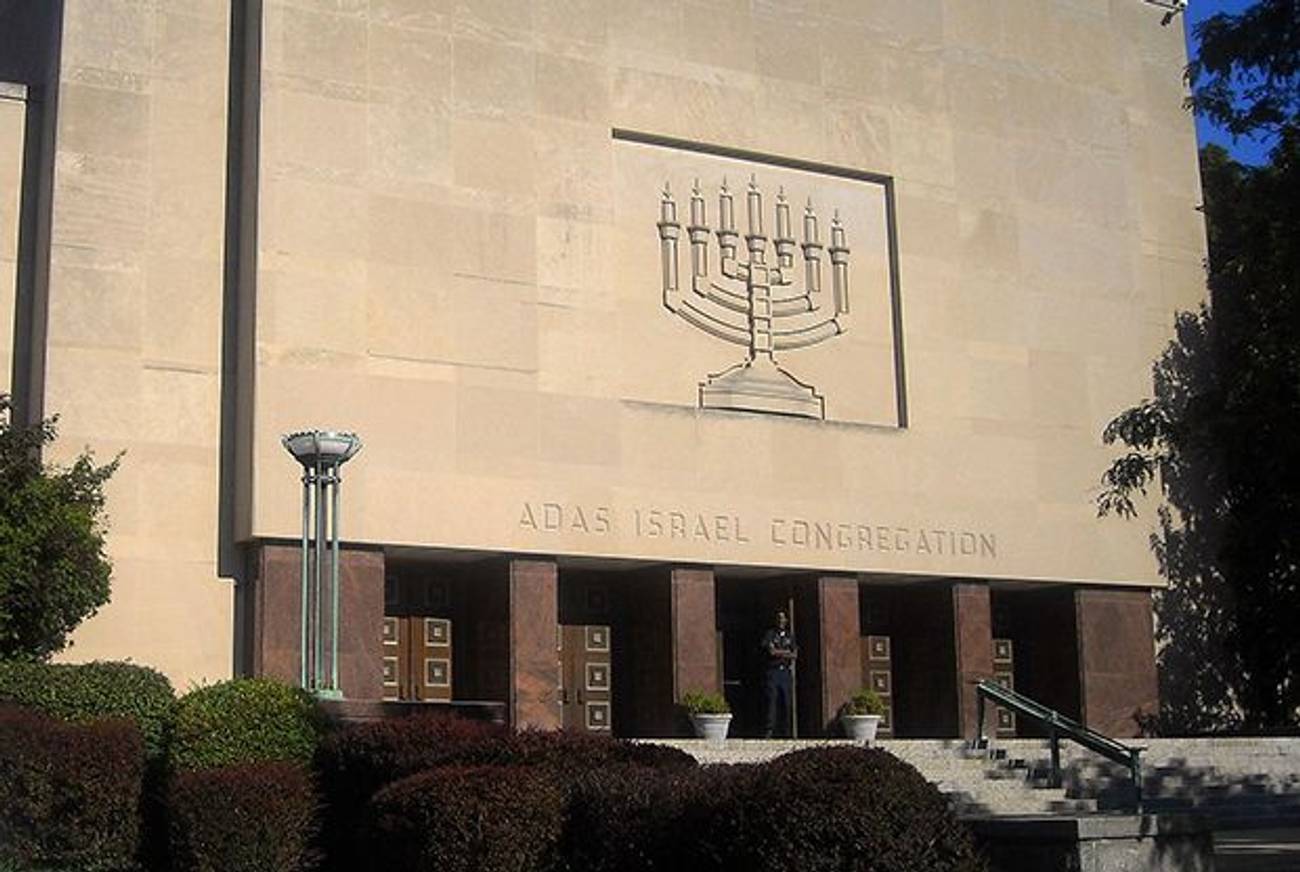A D.C. Synagogue’s Game-Changing Rabbi
Rabbi Gil Steinlauf made headlines for coming out as gay this week. He had already transformed the venerable congregation.




Adas Israel, a 146-year-old high-profile Conservative synagogue perched visibly on Connecticut Avenue in Washington, D.C., is in the news this week after Rabbi Gil Steinlauf announced Monday in a letter to congregants that he and his wife of 20 years were getting divorced, and that he was gay. I was bat mitzvahed at Adas Israel, and later confirmed, and this year I reluctantly returned with my parents for Yom Kippur only to find a completely different—and in many ways improved—version of the Jewish institution I had rebelled against for so many years.
I moved to Oakland, CA, after 10 years of searching, of flinging myself as far as possible from the Conservative Judaism of my childhood in order to find space for the actual Jew inside me, one who eventually did learn the prayers but had to do it her own way. So when I decided to return to Rabbi Gil Steinlauf’s Adas Israel for Kol Nidre services this year I worried I was going backwards, deep down into the staunch, rule-based Judaism of my childhood.
Kol Nidre began just as I imagined it. I was standing between my mother on the left and my father on the right. They had sat in the same seats for 30 years but this Yom Kippur the seating plan had changed. The sanctuary interior was new; the whole room was revamped, with the seats more circularly arranged, closer together. There had been an architectural rehaul, with softer, more interesting walls, a higher ark, and a massive skylight with gold-lettered prayers surrounding it. Someone, it seemed, had let the light in.
I took a walk and explored the rest of the synagogue, entering room after room. It wasn’t the same shul I grew up with. I found a beautiful new sanctuary with windows as walls. Upstairs in the library I sat in silence with the Jewish Mindfulness group and later listened as people opened up and shared their feelings. And downstairs, still a fourth and fifth service. My childhood synagogue, once uniform, had evolved into a world that held everything in one building—all parts, all people.
Eventually I went back to the front steps of Adas Israel to make my way to the sanctuary. Lining the steps were hundreds of Jewish young adults there for the free outdoor spiritual service sung to tunes I recognized from my new community in California. Washington Judaism was not passé, nor was it going extinct. My father and mother were still inside—the traditional prayers were still intact—but outside throngs of people stood even as it began to rain, closing their eyes in silent prayer.
I joined my parents in the main sanctuary towards the end of the evening and watched Rabbi Steinlauf, the man who had facilitated the synagogue’s striking evolution. I remembered when Adas first hired him, when things started shifting. People were nervous. He let a gay couple be married. He talked about accepting interfaith weddings. He was pushing meditation and mindfulness. Had Adas gone soft? Had it lost its staunch and traditional edge?
Coming home to pray this year I found that everything, all the Jewish homes I had built for myself, existed inside a single synagogue—with Rabbi Steinlauf at the helm.
It makes sense to me now: a man with many rooms inside himself and his heart is the only man capable of sparking such a shift. He brought light to the sanctuary, transparency to prayer. He bridged the left wing and the right, the staunchly traditional and the new and innovative. There is silence and there is noise, old songs and new—and this is what it means to be Jewish: everything in one, the whole world inside a single cell, a single synagogue, a single rabbi.
Merissa Nathan Gerson is a writer, sex educator, and rape prevention advocate. She teaches Alternative Journalism at Tulane University in New Orleans.